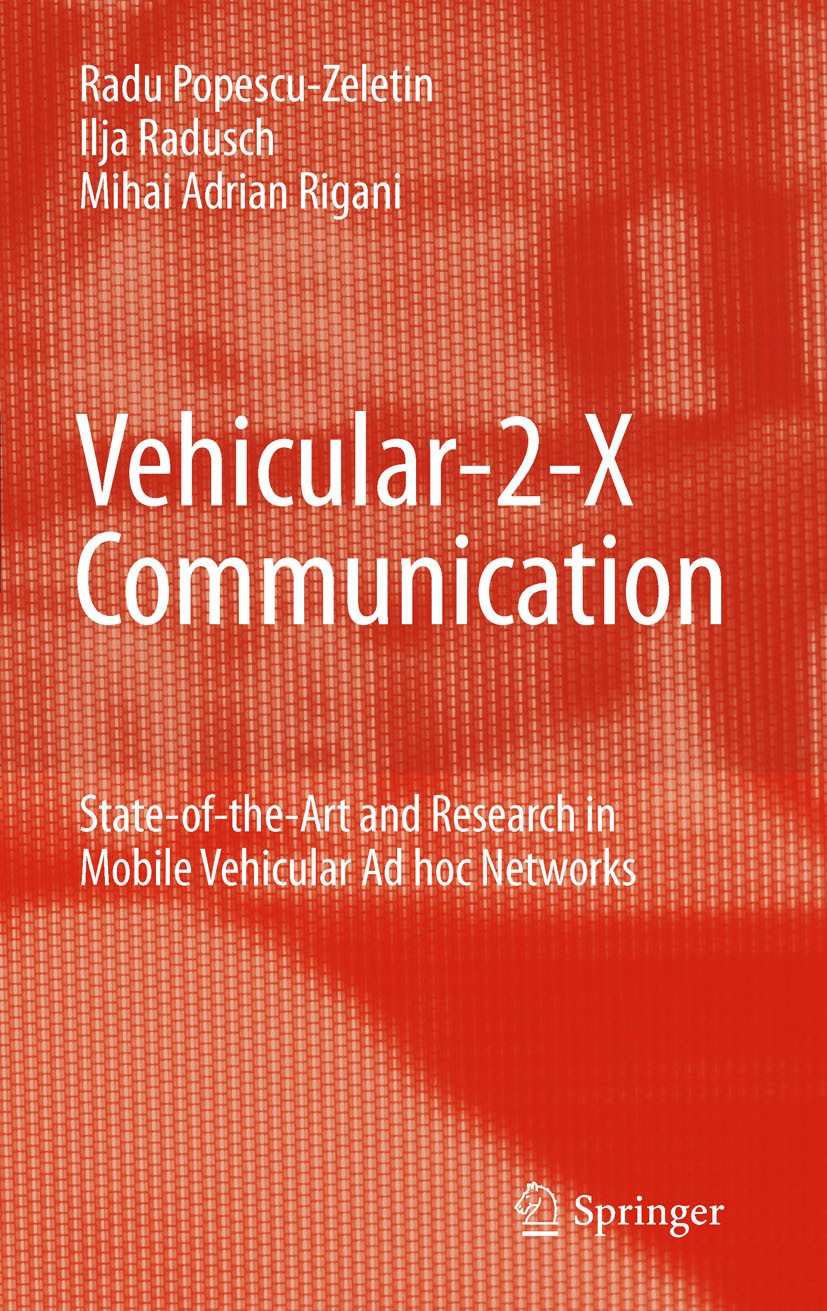| 书目名称 | Vehicular-2-X Communication | | 副标题 | State-of-the-Art and | | 编辑 | Radu Popescu-Zeletin,Ilja Radusch,Mihai Adrian Rig | | 视频video | http://file.papertrans.cn/981/980971/980971.mp4 | | 概述 | Provides in-depth description of standards of vehicular networks.Emphasis is put on vehicular-2-x communication technologies.High mobility and amplified interoperability issues both on network and app | | 图书封面 |  | | 描述 | Universal vehicular communication promises many improvements in terms of ac- dent avoidance and mitigation, better utilization of roads and resources such as time and fuel, and new opportunities for infotainment applications. However, before widespread acceptance, vehicular communication must meet challenges comparable to the trouble and disbelief that accompanied the introduction of traf c lights back then. The rst traf c light was installed in 1868 in London to signal railway, but only later, in 1912, was invented the rst red-green electric traf c light. And roughly 50 years after the rst traf c light, in 1920, the rst four-way traf c signal comparable to our today’s traf c lights was introduced. The introduction of traf c signals was necessary after automobiles soon became prevalent once the rst car in history, actually a wooden motorcycle, was constructed in 1885. Soon, the scene became complicated, requiring the introduction of the “right-of-way” philosophy and later on the very rst traf c light. In the same way the traf c light was a necessary mean to regulate the beginning of the automotive life and to protect drivers, passengers, as well as pedestrians and other inhabitants | | 出版日期 | Book 2010 | | 关键词 | Automotive; Car-2-Car Communication; Computer Science; VANETs; Vehicular networking; communication; simula | | 版次 | 1 | | doi | https://doi.org/10.1007/978-3-540-77143-2 | | isbn_softcover | 978-3-642-42605-6 | | isbn_ebook | 978-3-540-77143-2 | | copyright | Springer-Verlag Berlin Heidelberg 2010 |
The information of publication is updating

|
|
 |Archiver|手机版|小黑屋|
派博传思国际
( 京公网安备110108008328)
GMT+8, 2025-12-28 03:37
|Archiver|手机版|小黑屋|
派博传思国际
( 京公网安备110108008328)
GMT+8, 2025-12-28 03:37


